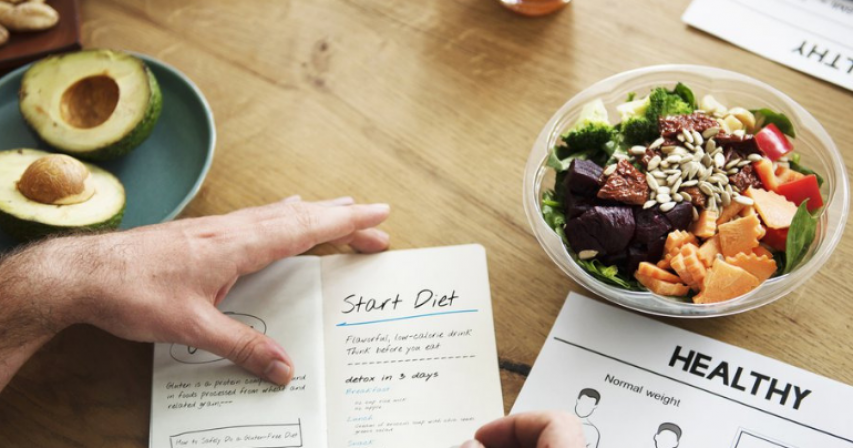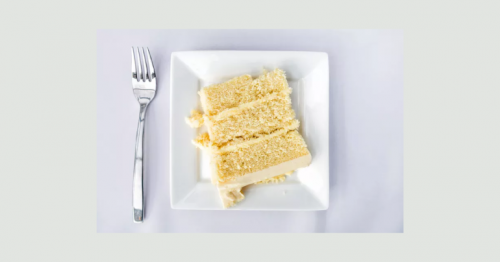Ketogenic Diet Plan and Detailed Guide for Beginners

Turning to butter and bacon to lose weight and boost health might not scream “winning plan” to everyone. But it makes perfect sense to those on the ketogenic diet (or “keto diet”), the latest “it” regimen that backs high-fat, moderate-protein, and low-carbohydrate eating.
Of course, behind every popular diet there’s controversy. Among the criticisms of the keto diet, skeptics say the plan is too restrictive, lacks nutritional balance, and hasn’t been studied for long-term effects.
What Is a Ketogenic Diet?
On a ketogenic diet, you’re generally eating a diet that’s high in fat (roughly 70 percent of your total calories come from fat), moderate in protein (about 20 percent of your calories), and low in carbohydrate (about 5 percent of calories). By limiting carbohydrates (to usually less than 45 grams for the average person), your body lacks the glucose (from carbs) that it normally uses for energy, so it eventually switches over to burning fat as its primary fuel source instead; through a metabolic process called ketosis, the liver converts the fat into fragments of fatty acids called ketones, which power the brain and other organs and tissues.
Everyone has to find their nutritional sweet spot for producing enough ketones and staying in ketosis, but “the core principle of the diet is to keep carbohydrate intake low enough, so your body continues producing ketones at elevated levels,” says Volek. “Your body adapts to this alternative fuel and becomes very efficient at breaking down and burning fat.”
Different Types of Ketogenic Diets
-
Standard: This version—the type we’re discussing in this article—is consistently low-carb, moderate protein and high-fat, and the one that has been the most widely studied and shown to be beneficial for therapeutic uses, such as diabetes.
-
Cyclical: Also referred to as “carb-cycling,” this diet involves injecting short periods of high-carb consumption (called “carb refeeds”) into a regular keto diet to replenish glycogen stores for muscle growth. This version isn’t well-studied and is aimed more at serious athletes and bodybuilders.
-
Targeted: On a targeted keto diet, you consume carbohydrates around your workouts to improve athletic performance without knocking yourself out of ketosis for too long. This version is also geared toward hardcore exercisers.
Who Should Not Be on the Keto Diet?
Blanket statement: It’s always best to check with your doctor before starting on this regimen. With that said, “the keto diet isn’t recommended for those with liver or kidney disease, or someone with a medical condition, such as a gastrointestinal issue, who can’t metabolize high amounts of dietary fat,” says Sarah Jadin, a Los-Angeles based registered dietitian and founder of Keto Consulting, LLC. If you’ve had your gallbladder removed, the keto diet may be a no-go. Women who are pregnant or breastfeeding and people with certain rare genetic disorders shouldn’t try this diet.
“If you’re using the keto diet for medical nutrition therapy, you definitely need medical oversight to be successful," says Jadin. “Though anyone considering the keto diet would benefit from partnering with a medical professional, such as a dietitian, who is well-versed in this diet.”
Ketogenic Diet Benefits
Positive science on ketosis coupled with personal successes passed by word-of-mouth have driven more people to explore the ketogenic diet, says Volek. More recently, the keto diet hints at having a promising therapeutic role in cancer, Alzheimer’s, Parkinson’s and polycystic ovary syndrome (PCOS). Research is still early in many areas, but Volek suspects there will more definitive answers on the wider scope of the diet’s benefits within the next decade.
Benefit #1: Weight Loss
You may experience rapid weight loss in the first week due to fluid loss, but then after a few weeks, you’ll likely notice more pounds peeling away. Many reasons for this weight loss are being investigated, but the journal Obesity Reviews, reveals that ketosis suppresses your appetite, which squashes the desire to eat.
Benefit #2: Control Blood Sugar
Most carbs you consume are broken down into sugar that enters the bloodstream. When you rein in carbohydrates on the keto diet, you have lower levels of blood glucose (high blood glucose can lead to diabetes). A study in the journal Nutrition reveals that a ketogenic diet improves blood glucose levels in type 2 diabetics more significantly than a low-calorie diet and can also decrease the dosage of your diabetes meds.
Benefit #3: Improve Cholesterol and Blood Pressure
A review of multiple studies in the journal Nutrients found that ketogenic diets are connected to significant reductions in total cholesterol, increases in “good” HDL cholesterol levels, dips in triglycerides levels and decreases in “bad” LDL cholesterol; there are questions as to whether diets high in saturated fat negate these benefits. The same paper reports that a ketogenic may slightly reduce blood pressure, but science is still very scant on this point.
Benefit #4: Lower Inflammation
With inflammation driving most chronic diseases, the keto diet is anti-inflammatory and may help ease some inflammation-related pain conditions, according to researchers at Trinity College. One mechanism at play: The keto diet eliminates sugar and processed foods that can lead to oxidative stress in the body, a cause of chronic inflammation.
Benefit #5: Longer Life
This may be more of a maybe, but recent studies on mice fed a ketogenic diet lived longer, according to Cell Metabolism. “Not only did these mice live longer, they had expanded health in terms of physical and cognitive functioning,” says Volek. “Meaning, they lived happy, healthy lives.” Obviously, human studies need to be performed.
Common Side Effects of Keto Diet
You can have a completely smooth transition into ketosis, or…not. While your body is adapting to using ketones as your new fuel source, you may experience a range of uncomfortable short-term symptoms. These symptoms are referred to as “the keto flu.” Low-sodium levels are often to blame for symptoms keto flu, since the kidneys secrete more sodium when you’re in ketosis, says Volek. A few side effects:
Headache and Dizziness
Most people on the keto diet need to bump up their daily salt intake by an extra gram or two to avoid side effects like headaches, dizziness and even fainting, says Volek. To eliminate the symptoms caused by salt depletion, Volek suggests drinking broth made with a bouillon cube (which has slightly less than 1 gram of sodium), once or twice a day.
Constipation
When you eat a high-fat diet, you slow down your gastric emptying and your motility, which can set you up for constipation, says Jadin. Making sure you’re getting that extra bit of sodium, eating enough fiber-filled non-starchy vegetables and drinking plenty of fluids (since you urinate more on the keto diet) can move things along.
Heart Palpitations
When you’re lacking sodium, your kidney may wind up secreting potassium and you can end up with a mineral imbalance that leads to problems with your heart beat, explains Volek.
Ketogenic Diet Food List
“The cleaner, the better when it comes to the keto diet,” says Jadin. Focus on “whole” and “unprocessed.” Also, strive for a mix of saturated and unsaturated fats for balance. Note: Tipping the scale toward too much protein is a common pitfall many people make on the keto diet. Mind your protein intake, since too much can kick you out of ketosis, says Jadin.
Foods to Eat
Consider this just a general snapshot of what’s allowed and what isn’t (and there are differences in opinion).
- Meat: beef, chicken (skin-on is okay), turkey, lamb, pork (including bacon), sausage
- Tofu
- Fatty fish and shellfish: salmon, trout, mackerel, shrimp, scallops
- Eggs: ideal when cooked in fat
- Berries: strawberries, blackberries, blueberries, raspberries (in limited quantities)
- Non-starchy vegetables: leafy greens, like spinach and kale, broccoli, cauliflower, celery, cucumber
- Nuts and seeds: macadamias, walnuts, pecans, chia seeds, pumpkin seeds, hemp hearts, flaxseeds, coconut, peanuts (a legume exception)
- Nut and seed butters (with no added sugar): sun butter, almond butter, peanut butter
- Full-fat dairy (in limited quantities): heavy whipping dairy, yogurt, sour cream, cottage cheese, cheese
- Avocados
- Fats and oils: butter, coconut oil, olive oil, hemp oil, flaxseed oil, almond oil, avocado oil, sesame oil, mayonnaise
- Sugar substitutes: personal preference whether to include
- Dark chocolate (limited quantities)
Foods to Avoid
- Grains (white and whole): cereal, pasta, rice, bread (except keto-friendly homemade or packaged low-carb bread/wrap products)
- Starchy vegetables: potatoes, sweet potatoes, corn
- Legumes: lentils, peas, beans, quinoa, chickpeas
- Fruit: most types, because of natural sugar (bananas are especially high in sugar)
- Traditional desserts: cakes, cookies, ice cream, candy
- Milk and most low-fat dairy, including flavored yogurts
- Added sugar, including agave and honey: especially in condiments, salad dressings, and prepackaged sauces and soups
What to Drink
- Water or carbonated water
- Calorie-free beverages (limit artificial sweeteners)
- Unsweetened nut milk: almond, cashew
- Tea
- Coffee
/ Source: realsimple.com






Comments